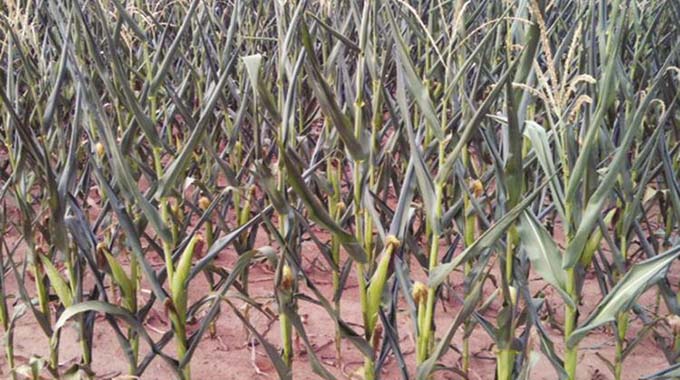
Ellen Chasokela Herald Reporter
Poor rains have delayed planting of the 2019-2020 summer crop posing fresh threats of a reduced crop yield for the current season.
Delays in planting due to scarce rainfall has affected the sowing of the country’s main staple crop maize.
Reports on the ground show that most farmers have not planted while others who have done so have put their crop at risk of wilting.
Scarce rains have thrown the whole crop production process into disarray with most farmers torn between having to plant or to wait until moisture conditions have improved.
Agricultural experts say farmers who have not planted their maize crop should now opt for short-season varieties to avoid losses.
“For those who have not planted anything yet, it is advisable that they do a small portion of dry planting. It is risk to dry plant the whole field under these dry conditions because the rains are not adequate and the seed will decay in the soil,” Agritex principal director Mr Joseph Gondo said in an interview yesterday.
“They should also have their land preparations done in advance so that when the rains come all they do is plant. Other farmers, especially smallholder farmers, do not want to gamble by dry planting so they will wait till rains improve.’’
The early planted crop is now at risk.
“Those that planted early when the rain season came saw their crop germinating very well but the dry conditions are now a challenge for them,” Mr Gondo said.
“Some farmers could have resorted to irrigation to make sure that their plants survive but now electricity is a challenge so they have to wait for the rains. So far the plants are still very small so they can survive the dry conditions but not for long.”
On the other hand, high input costs have forced most farmers to reduce their hectarage.
Tillage services and input prices have gone up several times this year with some service providers demanding payment in US dollars.
Uptake of most agricultural inputs has been slow owing largely to prohibitive costs.
Zimbabwe Commercial Farmers’ Union (ZCFU) president Mr Shadreck Makombe said most of the planted crop is now wilting due to inadequate rains.
“The few farmers that had already planted are now worried about crop moisture stress,” he said.
“There is little planting going on because farmers are not sure of what to do since there have been no updates on the national rainfall outlook forecast. Initially, weather forecasters said the country was expected to receive normal to above normal rains but that is contrary to what is happening now.
“We want assurances that our crops will survive. The official statement on what we should do, should come from the Meteorological Services Department (MSD) and Government because now there are reports from the United Nations indicating that the SADC region will be dry and this has caused confusion among farmers. They do not know what to do now,” the ZCFU president said.
Mr Makombe urged the Government to support farmers with inputs as they can no longer afford to buy all inputs.
Meanwhile, MSD senior forecaster Mr Tichaona Zinyemba said rains are expected later this week starting with the western parts.
“From Wednesday we are expecting rains accompanied by thunderstorms in the western parts of the country spreading into the eastern parts and the rest of the country by the weekend,’’ he said.
Zimbabwe is set to experience another severe round of drought in the 2019-2020 cropping season worsening the food security situation which has left millions in need of food assistance.
Regional and international climate prediction agencies say the entire Southern African region is forecast to receive below-average rainfall that may affect crops and reduce yields sharply.
Extreme drought across Zimbabwe and Southern Africa has led to water rationing, falling dam water levels, livestock deaths, widespread crop failure and the declaration of drought emergencies in most countries.
The region recorded the lowest rainfall in nearly four decades in the 2018-2019 cropping season, leading to increased food insecurity and water shortages in all the countries.
The UN World Food Programme says about 9,2 million people in Southern Africa were “acutely food insecure” and that the number could rise to more than 12 million in the lean period between now and March 2020.
The UN agency plans to assist approximately 5,4 million people with life-saving assistance and critical livelihood interventions in Zimbabwe, Mozambique, Lesotho, Eswatini, Namibia, Madagascar and Malawi.
See Comment on Page 8
